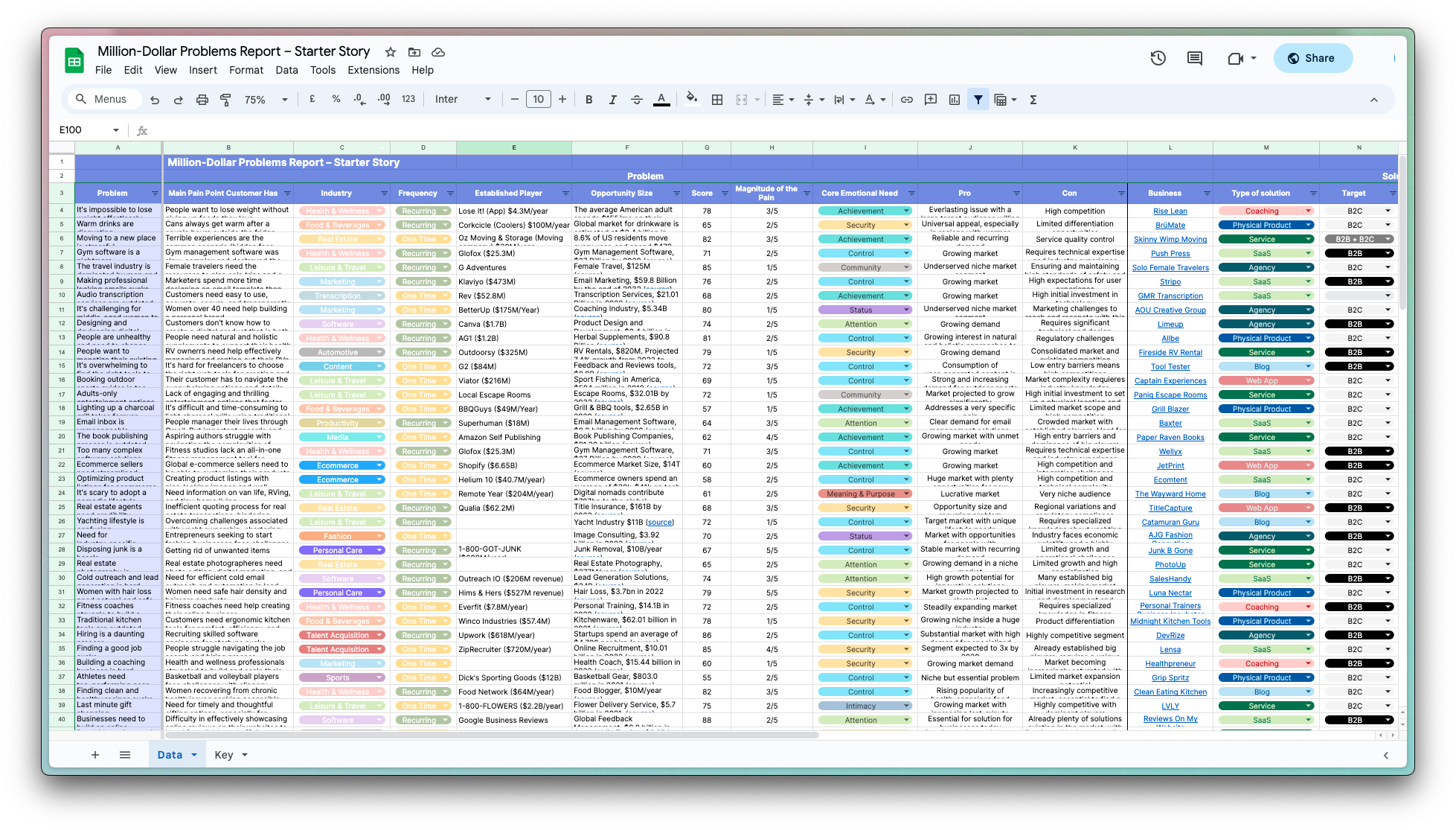|
|
|
|
$5K
monthly
|
60
days
|
$0.09
per visitor
|
$20
to start
|
90
out of 100
|
|
|
|
|
|
|
|
|
$125K
monthly
|
—
days
|
—
per visitor
|
—
to start
|
71
out of 100
|
|
|
|
|
|
|
|
|
$29.2K
monthly
|
—
days
|
—
per visitor
|
—
to start
|
72
out of 100
|
|
|
|
|
|
|
Online store for global Pokemon and TCG cards.
|
|
$280K
monthly
|
7
days
|
$14.00
per visitor
|
$499
to start
|
90
out of 100
|
|
|
|
|
|
|
|
|
$150K
monthly
|
30
days
|
—
per visitor
|
$25K
to start
|
84
out of 100
|
|
|
|
|
|
|
|
|
$525K
monthly
|
60
days
|
—
per visitor
|
$25K
to start
|
66
out of 100
|
|
|
|
|
|
|
Mobility scooter rentals for Los Angeles tourists.
|
|
$5K
monthly
|
7
days
|
—
per visitor
|
$500
to start
|
90
out of 100
|
|
|
|
|
|
|
|
|
$208K
monthly
|
760
days
|
—
per visitor
|
$500K
to start
|
68
out of 100
|
|
|
|
|
|
|
|
|
$8.33K
monthly
|
—
days
|
—
per visitor
|
$10
to start
|
90
out of 100
|
|
|
|
|
|
|
|
|
$6.5K
monthly
|
600
days
|
—
per visitor
|
$25K
to start
|
77
out of 100
|
|
|
|
|
|
|
|
|
$16K
monthly
|
3200
days
|
—
per visitor
|
$0
to start
|
82
out of 100
|
|
|
|
|
|
|
|
|
$1.25M
monthly
|
365
days
|
$50.00
per visitor
|
$500K
to start
|
38
out of 100
|
|
|
|
|
|
|
AI portrait generator for personal and pet images.
|
|
$4.5K
monthly
|
2
days
|
—
per visitor
|
$0
to start
|
85
out of 100
|
|
|
|
|
|
|
|
|
$18K
monthly
|
90
days
|
—
per visitor
|
$18K
to start
|
69
out of 100
|
|
|
|
|
|
|
|
|
$2.5K
monthly
|
500
days
|
—
per visitor
|
$12K
to start
|
81
out of 100
|
|
|
|
|
|
|
|
|
$2.8M
monthly
|
120
days
|
—
per visitor
|
$120K
to start
|
55
out of 100
|
|
|
|
|
|
|
|
|
$17K
monthly
|
—
days
|
$17.00
per visitor
|
$0
to start
|
90
out of 100
|
|
|
|
|
|
|
Infused honey brand with unique flavors.
|
|
$10K
monthly
|
150
days
|
—
per visitor
|
$50K
to start
|
89
out of 100
|
|
|
|
|
|
|
|
|
$250K
monthly
|
30
days
|
—
per visitor
|
$10K
to start
|
77
out of 100
|
|
|
|
|
|
|
|
|
$80K
monthly
|
120
days
|
—
per visitor
|
$3.5K
to start
|
78
out of 100
|
|
|
|
|
|
|
|
|
$120K
monthly
|
365
days
|
—
per visitor
|
$5K
to start
|
81
out of 100
|
|
|
|
|
|
|
|
|
$21K
monthly
|
270
days
|
—
per visitor
|
$320K
to start
|
64
out of 100
|
|
|
|
|
|
|
"Smart supplements for optimal brain health."
|
|
$1.16M
monthly
|
500
days
|
—
per visitor
|
$-300K
to start
|
50
out of 100
|
|
|
|
|
|
|
Crowdfunded dream of owning a private island.
|
|
$25K
monthly
|
1400
days
|
—
per visitor
|
$500K
to start
|
38
out of 100
|
|
|
|
|
























